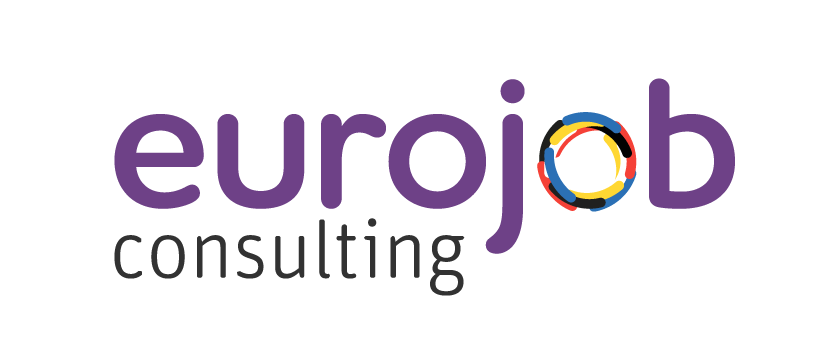Managing a team in Germany vs. the United States: Key differences and adaptations

When managing a team, the cultural context plays a crucial role in determining the effectiveness of leadership strategies. This is particularly true when comparing Germany and the United States. Despite both being Western, industrialized nations, their management styles and workplace cultures differ significantly. Here, we will explore the key differences and the habits that managers need to change when leading a German team compared to an American one.
2. Adapting management practices
3. Case studies and statistics
4. Practical tips for managers

The importance of hierarchy
In Germany, hierarchy and formal structures are highly respected. German companies tend to have a clear organizational structure where roles and responsibilities are well-defined. Employees expect clear instructions and respect for the chain of command.
For instance, in companies like Siemens AG, the organizational chart clearly delineates authority and responsibility, ensuring smooth operations and accountability. This contrasts with the more flexible and egalitarian approach often found in American companies, such as those in Silicon Valley, where hierarchies are less rigid, and there is more room for informal interactions between different levels of staff.
In practice, this means that a manager in Germany might spend more time on clarifying roles and responsibilities. For example, at Siemens, the expectation is that each team member knows their exact role and the reporting lines, which reduces ambiguity and improves efficiency. This is in stark contrast to companies like Google or Facebook, where job roles can be more fluid and collaborative efforts are more common.
Direct communication
German communication style is typically very direct and to the point. Germans value honesty and clarity, even if it means being blunt. This can be quite different from the American approach, which often emphasizes diplomacy and may involve more indirect ways of addressing issues to maintain harmony.
For example, in German business meetings, feedback is given straightforwardly and openly, which helps in quickly identifying and addressing issues. American managers might need to adapt by being more straightforward in their communications when managing a German team. This directness is seen as a sign of respect and professionalism in Germany, as it focuses on problem-solving rather than personal sensitivities.
A concrete example is the annual performance review process at Volkswagen Group, where employees receive very specific, performance-based feedback. This feedback is often quantitative, providing clear metrics on how well an employee is performing against their targets. In contrast, American companies might provide more general feedback to avoid hurting an employee's feelings.
"Germans value honesty and clarity, even if it means being blunt."
Lea Orellana-Negrin
Recruiter
Eurojob-Consulting

Work-life balance
Germans place a high value on work-life balance. The concept of "Feierabend" (the time when work is over) is deeply ingrained, and there is a strong cultural emphasis on separating work from personal life. In the United States, however, there is often a culture of long working hours and a more blurred line between professional and personal time.
According to the OECD, Germans work an average of 1,356 hours per year, significantly less than the American average of 1,779 hours per year. Managers in Germany need to respect and support this work-life balance to maintain team morale and productivity.
For instance, German labor laws mandate a minimum of 20 days of paid vacation per year, and it is common for employees to take long vacations. In contrast, American employees typically receive about 10 days of paid vacation per year, and it is not uncommon for them to forgo taking their full allotment.
Decision-making process
In Germany, decision-making tends to be more consensus-driven. Before reaching a decision, it is common to have thorough discussions and consultations with all relevant stakeholders. This process ensures that decisions are well thought out and that there is buy-in from the entire team.
In contrast, American companies often favor a quicker, top-down approach where decisions can be made rapidly by senior leaders. Managers transitioning to a German context should be prepared to invest more time in the decision-making process and involve their teams more extensively.
At Bayer AG, for instance, important strategic decisions are typically made after extensive consultation with various departments. This collaborative approach can take more time but usually results in well-rounded and sustainable decisions. In the U.S., a company like Amazon might make swift decisions to stay competitive in a fast-paced market, often with less input from lower-level employees.
Meetings and planning
Meetings in Germany are generally very structured and focused. Agendas are set in advance, and the expectation is that participants come prepared. The goal is to have productive discussions that lead to concrete outcomes. In the United States, meetings can be more informal, and the agenda might be more flexible. American managers working in Germany should emphasize preparation and adherence to the agenda to align with local expectations.
For example, at Mercedes-Benz, meeting agendas are typically circulated well in advance, and participants are expected to come prepared with relevant data and questions. This ensures that meetings are efficient and productive. In contrast, meetings at some American startups might be more free-flowing, with a focus on brainstorming and open-ended discussions.
Feedback and performance reviews
Germans appreciate constructive feedback that is specific and fact-based. Performance reviews are usually detailed and focused on measurable outcomes. In the U.S., feedback can often be more generalized and delivered in a way that aims to boost morale, sometimes avoiding direct criticism. Managers in Germany should aim to provide clear, actionable feedback and be prepared for a more critical and analytical approach to performance reviews.
For instance, at Deutsche Bank, performance reviews include detailed metrics and KPIs (Key Performance Indicators) that employees are evaluated against. This data-driven approach helps employees understand exactly where they stand and what improvements are needed. In contrast, American companies might use a more holistic review process that includes subjective assessments of an employee's teamwork and leadership qualities.

Siemens AG
One of Germany's largest and most successful companies, Siemens AG, exemplifies the structured and hierarchical nature of German corporate culture. With a clear chain of command and well-defined roles, Siemens ensures that its employees understand their responsibilities and the expectations placed upon them. This structure has been a key factor in Siemens' ability to maintain high standards and efficient operations across its global branches.
Volkswagen Group
Volkswagen Group places a strong emphasis on consensus in decision-making processes. By involving multiple stakeholders and taking time to discuss and refine strategies, Volkswagen ensures that its decisions are well-rounded and sustainable. This approach has helped the company navigate complex challenges and maintain its position as a leading automotive manufacturer.
Work-life balance in numbers
According to the OECD, Germans work an average of 1,356 hours per year, significantly less than the American average of 1,779 hours per year. This statistic underscores the importance of work-life balance in Germany and the cultural expectation that employees should have ample personal time outside of work.
Embrace structure and clarity
When managing a German team, it is important to provide clear instructions and establish well-defined roles. This helps to align with the local preference for structure and reduces ambiguity in the workplace.
Be direct but respectful
Adopt a communication style that is direct and transparent. While being straightforward, ensure that feedback is constructive and respectful. This will help build trust and foster an environment where employees feel valued and understood.
Prioritize work-life balance
Respect the cultural emphasis on work-life balance by avoiding after-hours communications and encouraging your team to take their entitled breaks and vacations. This will contribute to a healthier, more productive work environment.
Invest in consensus-building
Take the time to involve your team in decision-making processes. Encourage discussions and value the input of all team members. This collaborative approach will not only lead to better decisions but also enhance team cohesion and commitment.
Prepare thoroughly for meetings
Ensure that meetings are well-planned with clear agendas. Encourage participants to prepare in advance and focus on achieving concrete outcomes. This structured approach will be appreciated and will lead to more effective and efficient meetings.

Jérôme Lecot




